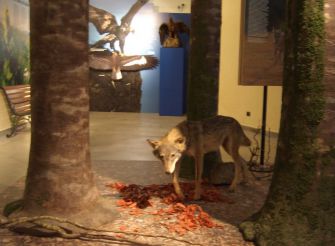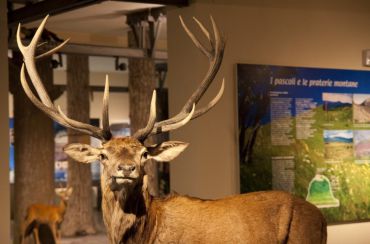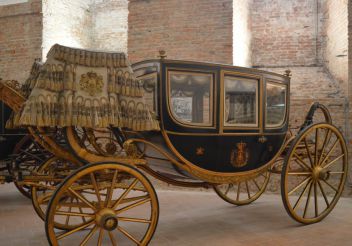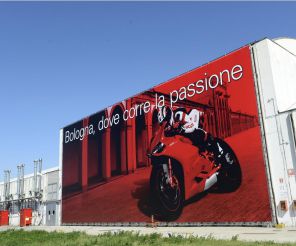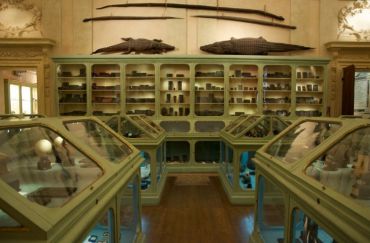Natural History Museum, Piacenza

Natural History Museum in Piacenza (Museo di Storia Naturale) is the main city establishment of its kind. It is based on the collections of the Commercial Technical Institute and is presented in a modern interactive form. Here you can get acquainted not only with the exhibits typical for such museums, but also with the history and geography of this area.
History of the museum and the building
Local scientists began to gather collections that make up the core of the museum's exposition, in the first half of the 19th century. The beginning of the documentary collection was laid in 1820, and the greatest flourishing in the history of the museum occurred in 1895-1898. For about a century the collections were owned by the Domenico Romagnosi Institute. In the spring of 1984, a committee was set up to implement the idea of organizing the Natural History Museum. It consisted of teachers of natural sciences and university scientists, as well as naturalistic groups. In 1991 the museum was opened. Initially, it was located in the premises of Palazzo Scotti, but in 2007 it was moved to the current location.
This place was the so-called "Ice Palace", an old ice factory of the former communal slaughterhouse. It was built at the turn of the 19th and 20th centuries. Work on the construction of the slaughterhouse began on May 12, 1892, and ended with the erection of a refrigeration shop (Palazzina del Ghiaccio) in 1912. The project was handled by engineer Diofebo Negrotti. Later the enterprise was bought by the private owner, and only at the end of the 20th century the city authorities got it back. After the reconstruction of the premises according to the new needs, museum collections were placed here, and the institution reopened the doors for visitors in 2008.
Exposition of the museum
The museum is located on an area of about 2000 square meters and includes exhibition halls, equipped training workshops, exhibition space and room for film screenings. The permanent exhibition of the museum is organized in such a way as to thematically represent 3 different types of terrain, typical for the province – plains, hills and mountains. It occupies 3 large exhibition halls:
- Plains. The hall is divided into 2 parts, including the valley of the Po River, and the plains far from the waterway. The main types of terrain in the area are represented here. To diversify the exhibition, the ethnographic part was included here. It is devoted to different types of human activity that have developed in the valley of the river for thousands of years.
- Hills. The main types of forests found in Piacenza are represented here – oak, pine and chestnut. Also, special attention is paid to the fauna inhabiting the local forests.
- Mountains. The third hall is dedicated to the mountain and foothill landscapes of the province, as well as to the animals inhabiting the mountains.
Currently, the museum systematizes and prepares to present thematic collections to visitors. They were gathered during almost 2 centuries by university scientists and simple enthusiasts. There are three of them:
- Botany. The core of the flora collection is made up of two very old herbariums. The first of these, Flora Italia Superioris, was assembled in 1820 and includes 1253 specimens. The second consists of 1153 exhibits collected in the 19th century by Andrea Poli. In addition to them, there is still a number of later samples.
- Zoology. A collection of the doctor and ornithologist Edoardo Imparati, consisting of samples of 233 species of birds is here. Also in the collection there are insects, reptiles and fish.
- Mineralogy. The collection contains stones, minerals, fossils of animals and plants. The collection includes 380 different breeds originating from the local lands of the Po River valley and the foothills of the Apennines.
The museum also presents the opportunity to see old equipment used for factory production to the visitor. In recent years, the institution is expanding and, in connection with this, it has acquired several collections that can become its new pride:
- Malacological collection. This is a collection by the scientist Raimondo del Prete. There are thousands of samples of terrestrial, freshwater and marine mollusks. There is also a small library of 628 volumes that relate to this topic.
- Collection of minerals of Giovanni Dosi. For 30 years, the passionate collector concentrated the richest collection in his hands: 1103 specimens from 56 countries (including 300 from Italy). 365 different types of minerals can be identified among these items. A special place is occupied by 32 samples, which are characterized by natural radioactivity.
- Collection Suiseki. This art came to us from Japan. In the collection there are beautiful samples of stones that were created under natural influence and resemble a variety of objects (houses, trees, animals).
How to get there
The museum is located on Via Scalabrini, 107, near the center of Piacenza, in the province of the same name. Next to it there are 2 important monuments for the city – the Wolf Monument and the Monument to Garibaldi near the city railway station. Nearby there are bus stops Politecnico and Urban Center. The routes 1, 2, 3, 4, 6, 8, 16, CS, E43 go to it.
Opening hours: Tuesday, Wednesday, Friday from 9:30 to 12:30, Thursday, Saturday, Sunday from 9:30 to 12:30 and from 15:00 to 18:00. It is closed on Monday. The ticket office closes 30 minutes earlier. Phone number (+39) 0523 334980.
Admission: a full ticket costs 3 euros, with a discount – 2 euro. It is valid for children (6-18), pensioners (over 65), and groups (of 15 people). For children under 6 and people with disabilities – admission is free. On each first Sunday of the month the ticket price is 1 euro. Data of May 2018.



